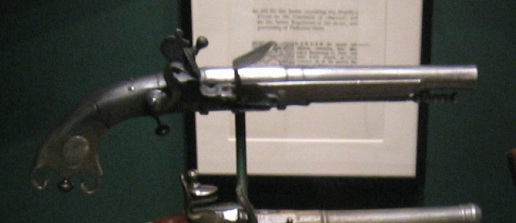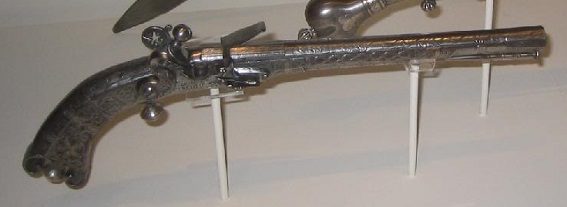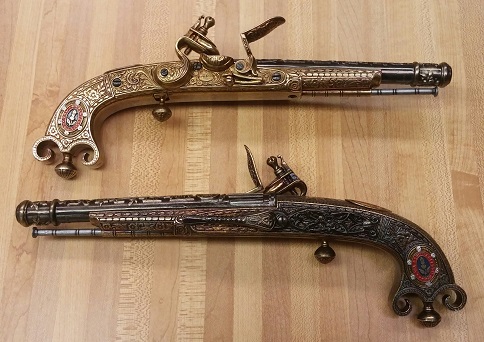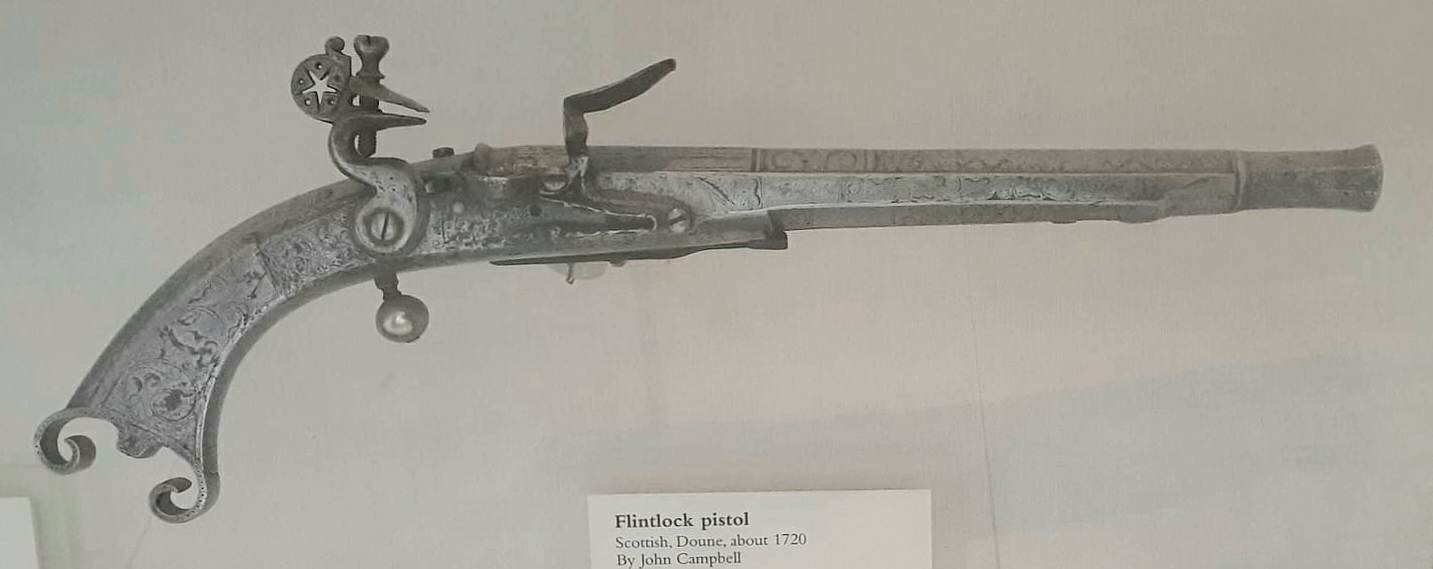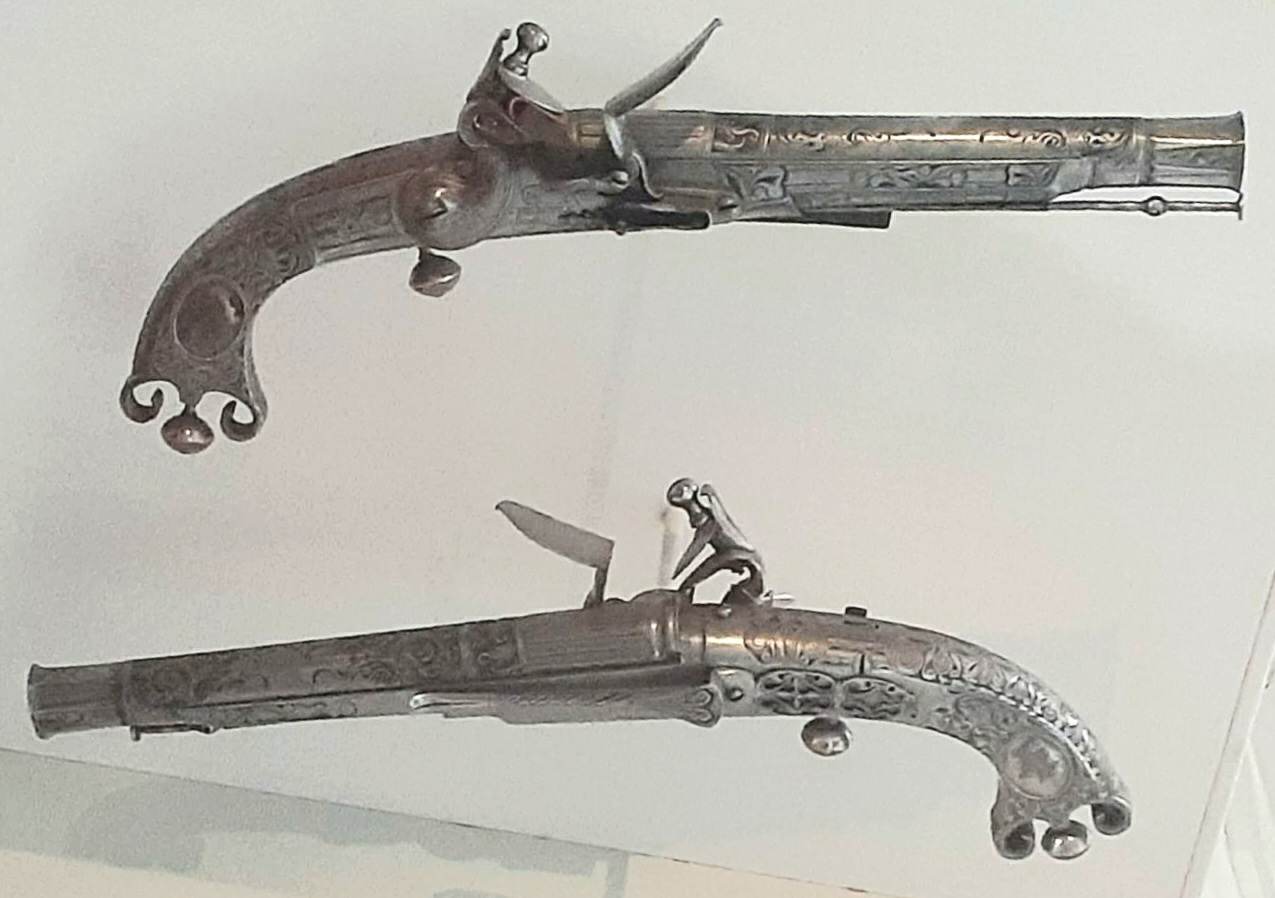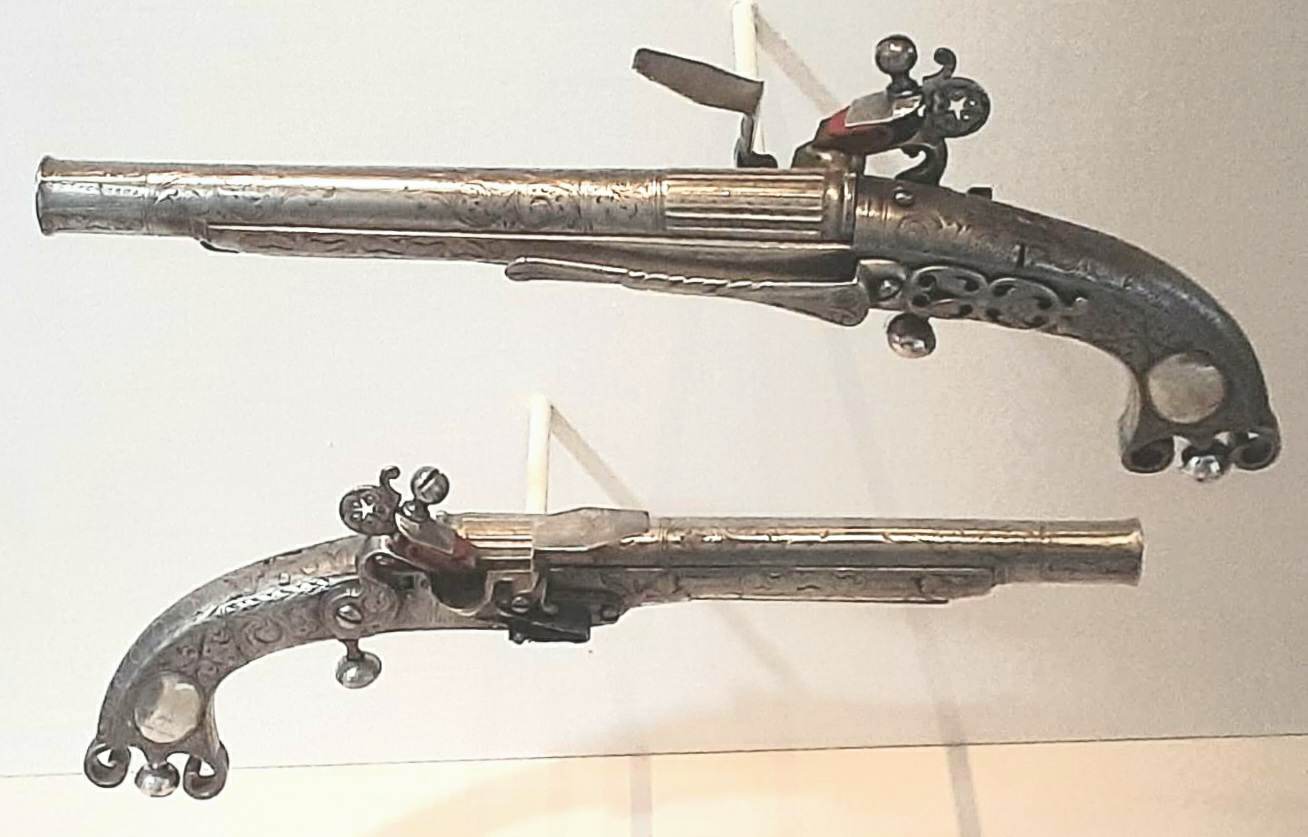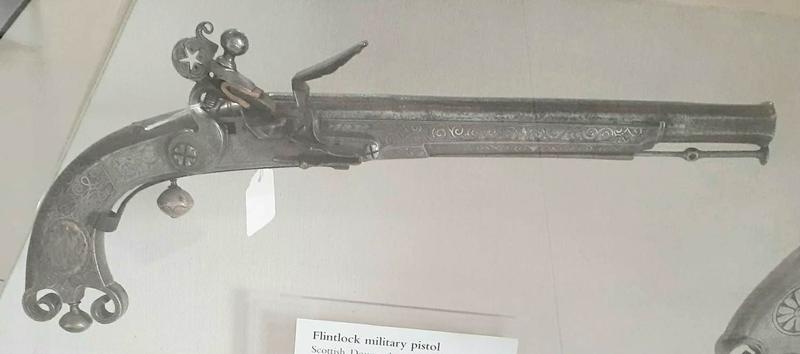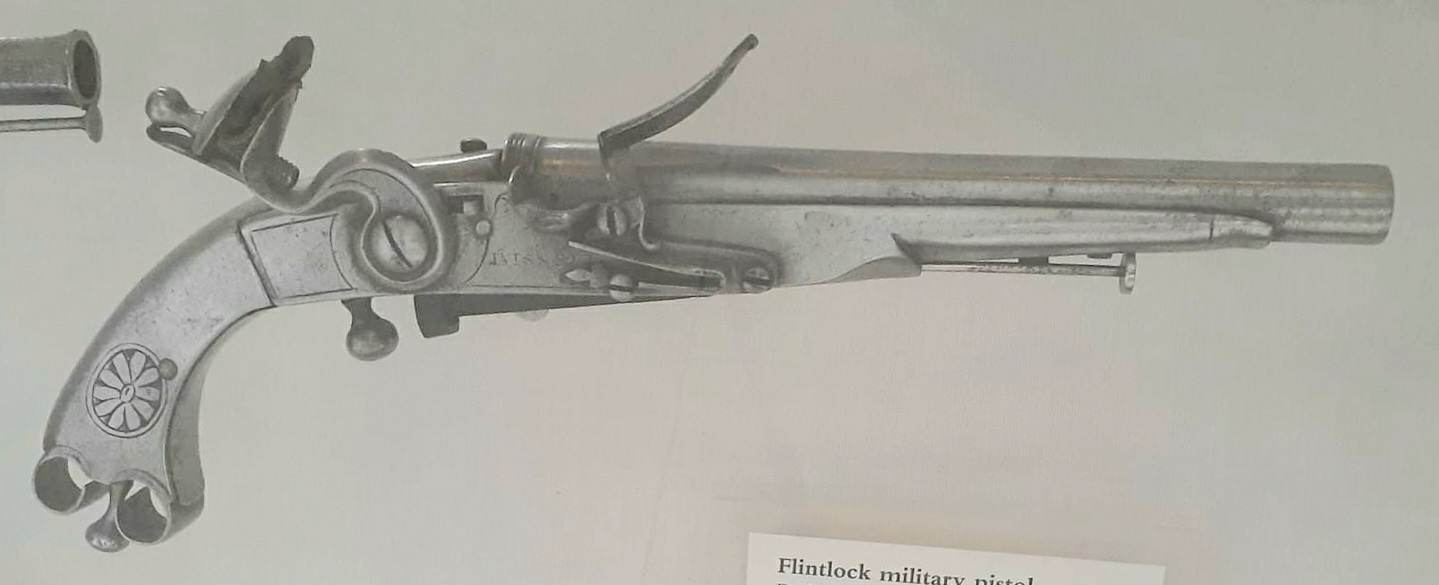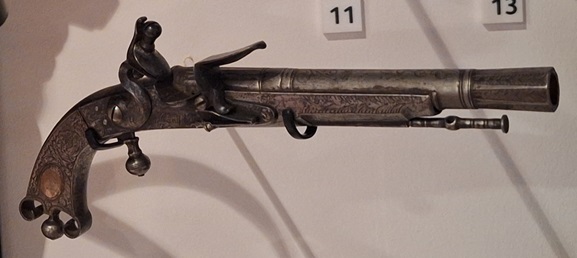Subject: ceann-cinnidh clan chief
Culture: Scottish Highlander
Setting: Jacobite rebellions, Highland regiments, Scotland late 17th-18thc
Object: dag pistol
Royal Armouries Museum > Tournament *
"'Scottish' pistol This is a remarkably accurate modern fake of an 18th century all-steel pistol with floral decoration.
It was intended to deceive rather than being simply a copy and its maker was convicted of forgery.
"FAKE! This cleverly imitates the characteristics of genuine pistols of the type.
However, its absolutely mint condition raised suspicion." ....
* DeWitt Wallace Museum > Masterworks
"Pair of Flintlock Pistols John Campbell, Doune, Scotland, ca. 1750-1770, Iron, steel, and silver ...
Of the firearms produced in Great Britain in the seventeenth and eighteenth centuries, all-metal pistols made in Scotland are the most culturally distinctive. The uniquely Scottish features on this pair include metal stocks of the 'ram's horn' or 'scroll' buttstock form, belt hooks, silver inlays, hollow silver triggers and vent picks, and boldly executed engraving on all components. Their maker, John Campbell, was part of a family whose gun production in Doune spanned from the end of the seventeenth century to the first decade of the nineteenth century, and is widely renowned today."
"Although these pistols were quite capable of being used as weapons, their primary function was that of a piece of jewelry, instantly identifying its wearer as Scottish. John Murray, 4th Earl of Dunmore and last Royal Governor of Virginia, was protrayed by Sir Joshua Reynolds in 1765 wearing a pistol strikingly similar to these two. Another nearly identical pair was carried by General Israel Putnam during the American Revolution. He captured them at the very beginning of hostilities on April 19, 1775, at Lexington and Concord from Major John Pitcairn of the British Marines, also a Scot." ...
* Metropolitan Museum of Art > Stone Gallery of Arms and Armor
"Pair of Flintlock Pistols Steel and silver Alexander Campbell (d. 1790) Scottish (Doune), ca. 1750-70
The Highland warriors of Scotland carried distinctive arms of novel design. Their pistols, unlike those made elsewhere in Great Britain, were constructed entirely from metal, usually steel, and were engraved and often silver-inlaid with geometric and foliate ornament of Celtic inspiration. This pair, signed by the renowned gunmaker Campbell of Doune, Perthshire, is a classic example of the type. Among the defining features are the scrolled 'ram's-horn' butts, button-shaped triggers (without trigger guards) and prickers (to clean the touchhole), decorative pierced rosettes behind the head of the cock, and belt hooks mounted on the side opposite the locks.
* Fort Pitt Museum
"Scottish Pistol, ca. 1773-1776
All-steel pistols were favored by Scottish officers in the British army. This piece was made by John Shiels who worked in Edinburgh, 1773-1776." ...
* Museum of Scotland > Scotland Transformed
* Denix #G1246
Royal Armouries Museum > War Gallery *
"Flintlock pistol Scottish, Doune, about 1720 By John Campbell This is an early example of a pistol made at Doune, a gun-making centre near Stirling. It is traditionally said to have been taken from the body of Col. MacGillivray, leader of the Clan Chatten, at the battle of Culloden in 1746."
* Royal Armouries Museum > War Gallery
"Pair of flintlock pistols Scottish, Stirling, about 1755 By John Christie These pistols combine traditional Scottish motifs with the then fashionable rococo style. The all-steel stocks are of English rather than Scottish type." ...
Royal Armouries Museum > War Gallery *
"Pair of flintlock pistols Scottish, Doune, about 1760 By John Murdoch These all-metal pistols are of traditional Scottish form with 'ram's-horn' butts and a belt-hook. The silver plaques bear the crest of Montgomerie." ...
* Royal Armouries Museum > War Gallery
"Flintlock military pistol Scottish, Doune, about 1750 by Alexander Campbell The pistol's steel stock is inlaid with interlaced patterns of silver wire, a common decorative style for Highland pistols. The maker's name and the Latin inscription 'Duni fecit' (made in Doune) are marked on the lockplate. The butt bears an unknown owner's monogram, 'MM'." ...
* Royal Armouries Museum > War Gallery
"Flintlock military pistol English, Birmingham, about 1780 By Isaac Bissell All-metal pistols in the Scottish fashion were made for the Highland regiments of the British army. This example is marked RHR for the Royal Highland Regiment (The Black Watch)." ...
